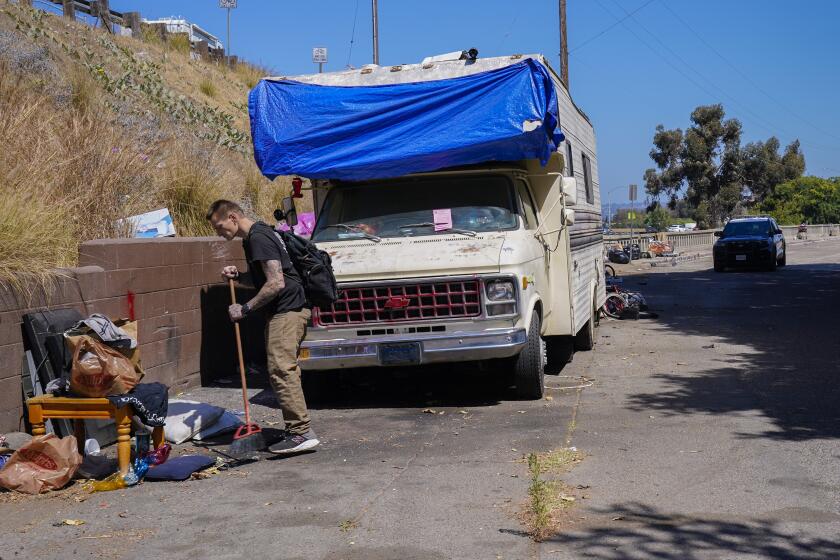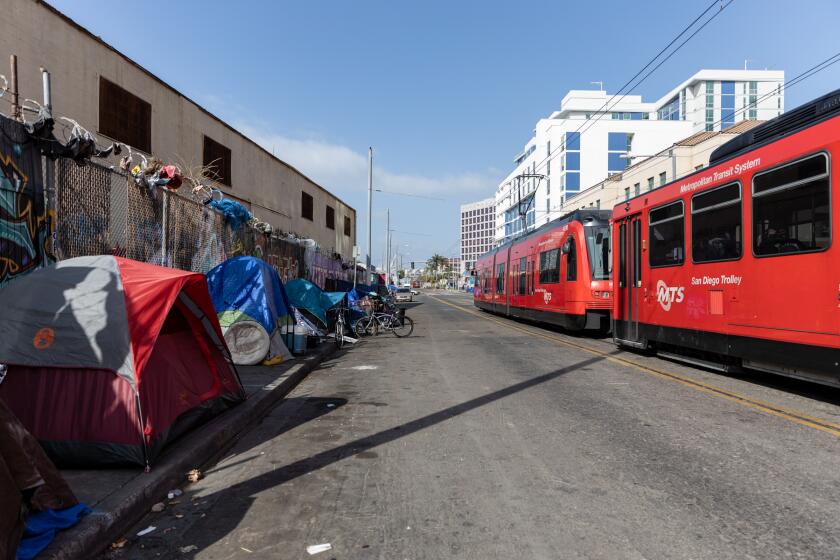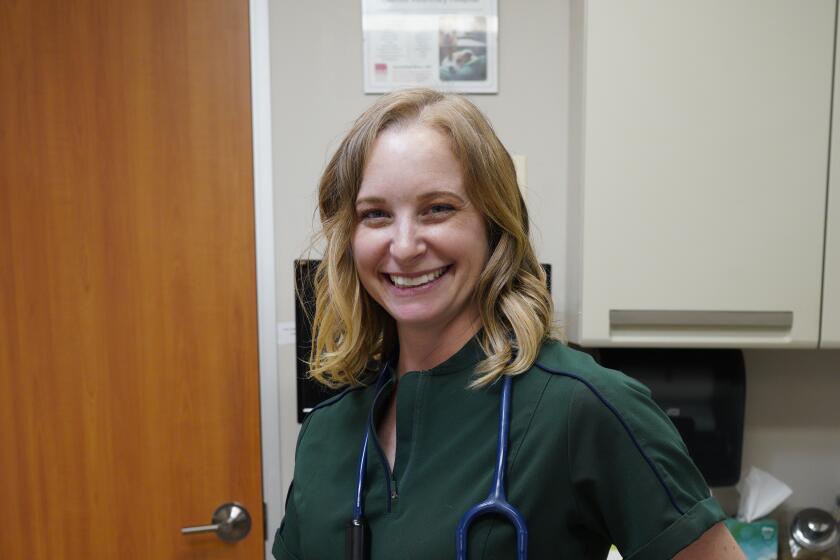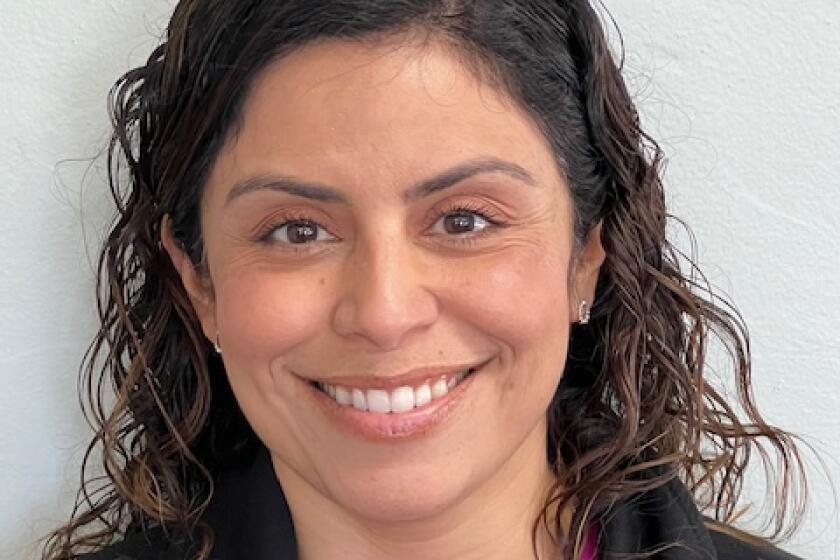Downtown homeless up 26 percent
More than 800 homeless people were living unsheltered on the streets of downtown San Diego in January, an increase of about 26 percent since last year, according to updated numbers from an annual count by the Regional Task Force on the Homeless.
“I think everyone is frustrated, because there’s a difficulty in claiming our title as America’s finest city when we have so many people who don’t have homes,” said San Diego City Council Todd Gloria, whose district includes downtown. “This is probably the top issue I hear about from my downtown constituents.”
Dolores Diaz, executive director of the Regional Task Force on the Homeless, said she was disappointed but not surprised that the downtown homeless population had increased.
Overall, the homeless population in San Diego County increased 2.8 percent from last year, but is down 3.1 percent since 2011. In comparison, the overall homeless population in Orange County has increased 5 percent in two years and the population in Los Angeles has increased 16 percent in that time.
An annual count of the homeless conducted in January found 8,742 homeless people in San Diego County, with just over half in shelters.
In downtown alone, counters found 833 unsheltered people, a 25.8 percent increase from last year. A downtown neighborhood that offers shelter and services for homeless people saw a 123 percent increase in the number of homeless people, while one downtown neighborhood east of Interstate 5 saw a 97 percent drop.
Diaz said there is no certain answer about why there was a jump in the number of homeless downtown. It’s possible that this year’s counters were just more efficient at finding people, she said, while another possibility is simply that there were more homeless people to count.
As to whether services to help the homeless have caused the downtown population increase, Diaz said, “It’s a complex conversation.”
Kris Michell, CEO and president of the Downtown San Diego Partnership, said business owners in the area are getting frustrated with the growing number of homeless people.
“But we’re working very hard every day to solve the problem,” she said. “The good news is that large businesses are banding together. We’re going to continue to work with getting people into programs.”
While it may appear obvious that homeless people will be found near services that help them, that doesn’t explain why there was such a large increase in one year. Michell said the partnership had noticed the increase before the latest count and set out to find an answer.
“Folks have said they found over 60 percent of homeless are from outside the county,” she said. “We are working with folks to find out why they’re coming here.”
Interviews with the homeless found that many people are coming from Los Angeles, Las Vegas and Phoenix, she said. One man said “a friend” in Las Vegas gave him a bus ticket to San Diego, and another said he did an Internet search for best cities for homeless people and found websites that recommended San Diego.
“We’re very concerned,” Michell said about the influx. “We certainly want to handle our own, but we don’t have the resources for the ones being imported here.”
Since there is no way to stop homeless people from moving to San Diego, Michell said more effort must be put into getting them off downtown streets and into programs. She also said well-intended people who give food to downtown homeless people should be discouraged because that may keep them from seeking long-term and more effective help.
“We are in some ways swimming upstream,” Gloria said. “It’d be nice to have additional funding from the federal government. If everything was held constant, we’d be at a better place.”
California cities lost money they used to receive from redevelopment districts, which Gloria said also restricted funding for homeless programs.
He also speculated that changes in laws that reduced penalties for some crime and realigned the placement of inmates might have resulted in people being released from custody but with no homes to go to.
Amy Gonyeau, chief operating officer and director of the Alpha Project, said she does not believe services to help the homeless have contributed to the growing downtown population.
“It’s all speculation,” she said about why the number increased.
Gonyeau said it’s important to keep in mind that the downtown services are not there to give handouts, but rather to help homeless people get off the street through jobs, housing and other assistance
“We’re trying to solve homelessness,” she said. “And not just the Alpha Project. At the Neil Good Day Center, we have 12 different partner agencies that provide an array of services.”
Gonyeau makes a distinction between groups like the Alpha Project and people who go downtown to bring food to people on the street.
“That definitely draws people to an area,” she said about “street feeding.” “We encourage people who want to do something good to do that stuff inside a program.”
Monica Ball, a volunteer with a group working to locally implement a national plan to end homelessness, said a lack of affordable housing in the area is more to blame for the large number of homeless people downtown.
“The increase in numbers, particularly in downtown, is a residual effect of our failure to meet the inventory demands for housing those who cannot care for themselves,” she said. “San Diego has basically zero-percent renting. A landlord can list a place on Craig’s List in the morning and have it filled by the afternoon.”
Ball is a community volunteer with the design team for the 25 Cities Project, a national effort to end homeless with a housing-first strategy. The plan was launched in downtown last year and involved surveying homeless people and prioritizing their needs, with a goal to house 150 veterans and 100 chronically homeless within 100 days. After 100 days, housing had been found for only 44 veterans and 40 chronically homeless.
High rents and a lack of vacancies prevented the project from finding more housing, she said. Landlords cannot be expected to lower their rent just for the project, she added, and housing vouchers do not go far enough to cover the bill.
She is hopeful, however, that public sentiment is turning toward seeing the need for creating more affordable housing.
After attending an Apartment Association expo about two weeks ago, Ball said she made several promising connections with apartment owners.
“Everybody wants to help,” she said.
Relying only on affordable vacant rentals will not be enough to house all the homeless in the county, she said. The city also must do a better job in repurposing vacant buildings, and housing vouchers must become more flexible so they can cover the cost of more rentals, she said.
Councilman Gloria said that the goal is have all homeless people someday off the street, but the reality is that there always will be more newly homeless.
“The question is how long we’re going to leave them on the street before they get help,” he said.
Detailed reports about the homeless population in cities throughout the county can be found online at https://www.rtfhsd.org/publications/.
Get Essential San Diego, weekday mornings
Get top headlines from the Union-Tribune in your inbox weekday mornings, including top news, local, sports, business, entertainment and opinion.
You may occasionally receive promotional content from the San Diego Union-Tribune.












